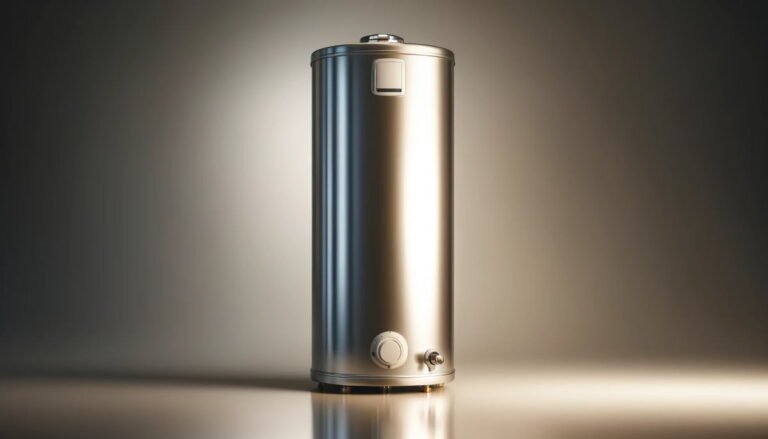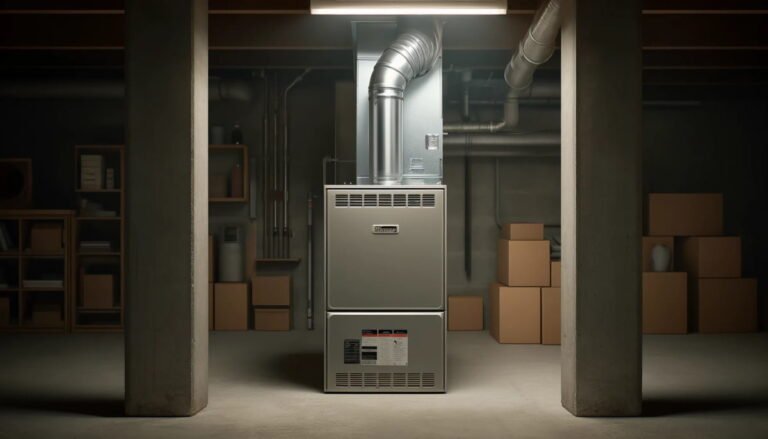Compare Ductless Mini-Split Heat Pumps vs. Window Heat Pumps: Which Is Right for You?
In this article, we are going to look at ductless mini-split heat pumps vs. window heat pumps, examine how each type works, compare, and look at which one could be the best choice for you to buy.
There have been many recent advances in technology in both systems, but especially those with heat pumps that provide both cooling and heating. Let’s see which is right for you today.
Which Type to Choose and Why
Many of us rent apartments across North America, especially in our larger cities, and have suffered uncomfortable, hot, sticky summers without cooling and cold winters with no heating, so what’s the best thing to do?
Most landlords won’t allow you to make physical changes to their property, limiting your options, but that’s where a window heat pump comes in. It requires no significant installation work or physical alteration to the property, which could end up with you losing your security deposit at the end of the lease.
An Overview of Window Heat Pumps
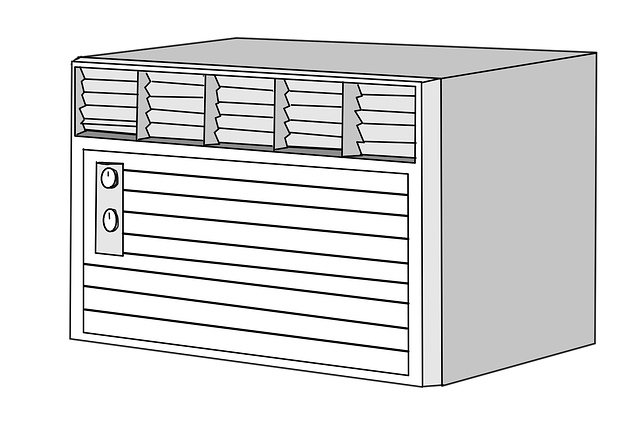
Window air conditioners have been the standard workhorse for decades – they are cheap to buy, need no expensive installation, so out of the box, they are ready to go fast. Now you have the same easy installation but with the added benefits of a heat pump and heating.
Window heat pumps look the same as air conditioners, but due to advances in technology, all the standard heat pump components are fitted into a unit of the same size as a cooler.
They are fitted in a window the same way and are still cheaper to buy than any other system at the same rating. These are designed to heat or cool only one room.
All window units will block out some of your light and the view, but the benefits can be worth it for some. You need to consider how to fill in the gaps on either side of the unit, but this can be done easily with timber panels or even transparent materials, still allowing light in, which is a bonus.
Window heat pumps are relatively easy to install with a friend’s help in just a few hours. They can be cumbersome, bulky, and awkward to handle, so an extra pair of hands is always useful during the otherwise straightforward installation.
However, the National Renewable Energy Lab (NREL) (opens in pdf) issued a recent report which emphasized the possibilities for saving energy with window heat pumps, with careful installation and effective sealing around the unit. Reducing air leakage can save you between 8 and 10% in your energy bills to run the unit, so it’s well worth it.
Always look for Energy Star recommended units, and one thing you need to make sure of is to choose the correct size of the unit to suit the space you want it to heat and cool if you want to save money on running costs down the line.
If you undersize it, the unit will have to work harder to do the job, and if you oversize it, the unit will cost you more to buy and run and won’t operate as efficiently as it should. This will ultimately cost you money. Ask your local HVAC professional for their input or measure the space and take the numbers along to a registered supplier who will assist you with the math.
Pros and Cons: Highlights
Pros:
- Affordable
- Easy to install (DIY)
- Suitable for one smaller room
Cons:
- Noisy
- Simple functions
- Less stable window installation
- Less aesthetically pleasing
- Reduces natural light
Which Size Should I Buy?
Make sure accurately to size your heat pump for the space you wish to cover. Window-style heat pumps are available in different power ratings (BTU).
Measure the room’s floor area to get the total square footage, which will give you an idea of the unit’s size you will need.
Use this handy table as an approximate sizing guide:
| Room Size (sq. ft.) | Power (BTUs/hr) |
| 150 | 5,000 |
| 260 | 6,000 |
| 280 | 7,000 |
| 340 | 8,000 |
| 450 | 10,000 |
| 550 | 12,000 |
| 800 | 15,000 |
| 1,000 | 18,000 |
| 1,300 | 22,000 |
| 1,560 | 24,000 |
What’s Available in Window Heat Pumps Today?
Let’s look at a couple of the window heat pumps available today at many of the large retail stores, so shop around for the best deal:
| Frigidaire FFRH0822R1 | Amana 17,300 BTU R-410A |
| 8000 BTU | 17,300 BTU |
| Heats/Cools up to 350 sq. Ft. | Heats/Cools up to 850 sq. Ft. |
| EnergyStar Rated | N/A |
| Slide-out chassis | Fixed chassis |
| Slide-out easy-clean washable filter | Slide-out easy-clean washable filter |
| 115V Standard Outlet | Requires 20-amp double-pole circuit breaker |
| Window kit included | Window kit optional additional cost |
| Dehumidification | Dehumidification |
| Remote control | Remote control |
| 8-way comfort control | TouchPad control |
| 3 cooling speeds, 3 fan speeds, and 1 heat speed | 2 – way air swing fan |
| 24-hour on/off timer | 24-hour on/off timer |
| Price: $429 | Price: $1377 |
Ductless Mini-Split System Heat Pumps
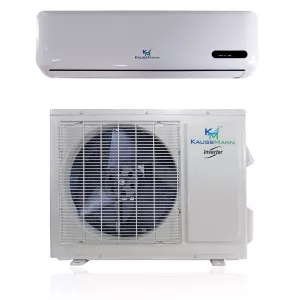
Be sure to check the US & Canadian consortium for gas and electric efficiency (CEE) Rating to see which models of the ductless mini-splits are right for you.
Ductless mini-split system heat pumps are now widely available; however, they require professional installation to guarantee you’ll get the maximum benefits from them and keep your warranty intact. These systems are more efficient and less noisy than the window type. They also look nicer, are safer, and do not occupy window space.
The system has an outdoor condenser unit with the compressor and fan, with an indoor mounted air handler, an evaporator coil, and a blower fan to deliver the conditioned air, which is why they are called split. Indoor and outdoor units are connected through refrigerant lines and electrical wiring, and it often requires a hole in the wall.
You need to be the property owner to install this type of system as most landlords won’t allow it, or if they do, they may ask you to commit to leaving the unit in place when you leave, which is not a financially sensible way to go.
Always Check the SEER Rating & Buy an Energy Star Unit
Seasonal Energy Efficiency Ratio is a measure of the effectiveness of a heat pump. The higher the rating, the more energy-efficient the unit will be. SEER calculates the efficiency of the system over a whole season. There is a useful (SEER) calculator here that’s worth trying.
Pros and Cons: Highlights
Pros:
- Attractive design
- Efficient
- Better control functions (with remote control)
- Can be used for one or multiple rooms
- More flexibility
Cons:
How Ductless Mini-Split System Heat Pumps Work
A ductless mini-split heat pump uses a minimal amount of power to pull warm air into the system from the surrounding area. It then removes the heat, using refrigerants as in a refrigerator, then conditions it, returning cold air to the room in which it’s operating.
A modern heat pump can cut your heating costs by more than 50% when compared to other types of electric resistance heating systems like baseboard heaters, for example.
Heat pumps have been used extensively throughout North America for decades. However, recent equipment advances have produced models that will work efficiently in areas where they experience lengthy intervals of extremely low temperatures too.
Ductless mini-split heat pumps are energy efficient because they move heat rather than burning fuel to make it, but they cost more to buy and install. The energy savings you will enjoy will make your investment payback time shorter.
Ductless mini-split systems can also heat larger areas of your home without ducts. Some models can support up to four zones, each with an individual air-handler, which can be wall or ceiling mounted. Combined with a thermostat, you can effectively heat or cool individual rooms or close it down in areas you are not using, thus saving on energy costs.
Mini-splits are also ideal in areas where your existing ducting can’t reach without significant costs and disruption. For example, in an added room or space, a workshop, or a garage. They can be installed quickly and easily without disruption or excessive costs.
Here are two suggestions for currently available units. The Daikin is more expensive but has a higher SEER rating which means it will be more energy-efficient to run.
| Klimaire 12,000 BTU KSIV Mini Split | Daikin 12,000 BTU 17 Mini Split |
| 12,000 BTU 14 SEER Rated | 12,000 BTU 17 SEER Rated |
| Covers an area of up to 550 sq. Ft. | Covers an area of up to 550 sq. Ft. |
| Quiet 25dB | Quiet 37dB |
| Remote control | Remote Control |
| Self-Cleaning | Blue Fin Protection – The hydrophilic coated fin ensures the condensate water moves easily to the drain pan |
| Auto sleep | Auto sleep |
| Auto-restart | Auto-restart |
| 5 Year Warranty | 10 Year Warranty |
| Dehumidification | Dehumidification |
| Variable fan speeds | Variable fan speeds + Powerful Boost Function |
| Auto defrost | Auto defrost |
| Indoor and outdoor installation units | Indoor and outdoor installation units |
| Price: $679 | Price: $1267 |
Conclusion
Do you own or rent the property? Most landlords won’t let you install a mini-split system which will limit your choice.
When considering ductless mini-split heat pumps vs. window heat pumps, it’s important to note the differences in cost and installation. Window heat pumps are cheaper and are technically ahead of models from a few years ago. They are simple to self-install, and they deliver heating and cooling plus dehumidification, too, and you can simply use the fan for fresh air without heating or cooling. But remember, it’s essential to buy the correct size unit for your space in the first instance.
Ductless mini-split heat pumps are more expensive to buy and install; however, they are superior in many ways. They offer you more control over your home’s environment with simple installation and ease of use.
They provide efficient cooling and heating, and dehumidification. Also, the system can be zoned to control several areas from a single unit without installing ducts. This allows you to heat and cool individual rooms in your property or shut them down when they are not in use.
The savings in power will deliver a faster payback on your investment, and in the meantime, your family will benefit from a more comfortable environment year-round.
Both types are great alternatives to central systems.
More About Heat Pumps
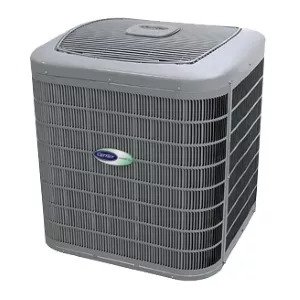
Heat Pump Not Cooling? Here’s What You Need to Know
Heat pumps are essential not only in the winter for heating our homes but also in the summer to cool…

Explore the Differences: How Ductless vs. Ducted Heat Pumps Compare
Deciding between ductless vs. ducted heat pumps is as easy as planning a holiday. You know it’s going to cost…
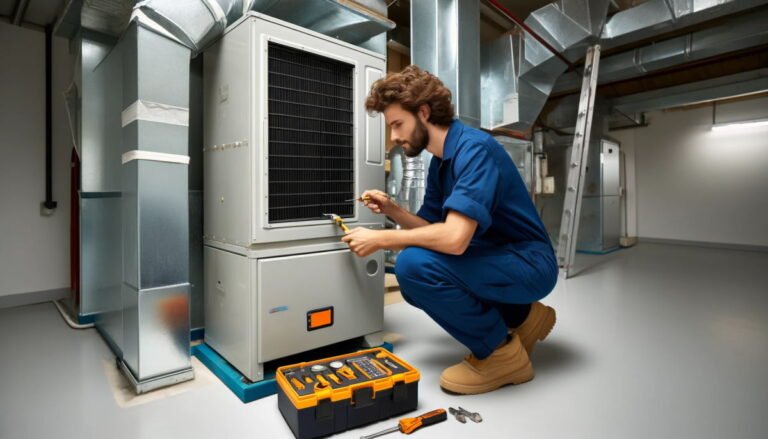
How to Improve Performance of Your Heat Pump Easily
Improving the performance of your heat pump is essential for maximizing its efficiency, reducing energy costs, and ensuring consistent home…


